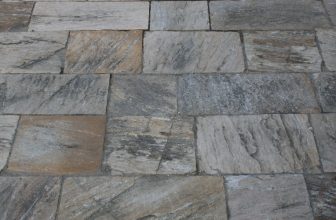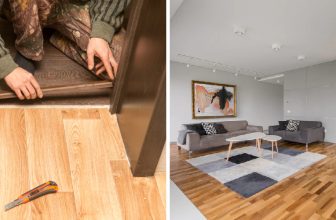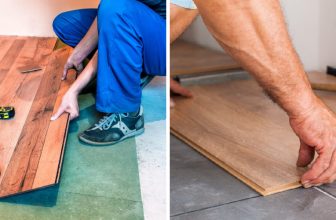How to Repair Buckled Hardwood Floors
Hardwood floors are a perfect addition to any home, providing both aesthetic and functional benefits. But when your hardwood floors buckle, it can be a headache. Buckling is a sign of moisture damage and could lead to major structural damage if left untreated. However, this problem is correctable. In this guide, we’ll cover how to repair buckled hardwood floors so your home can be restored to its optimal condition.
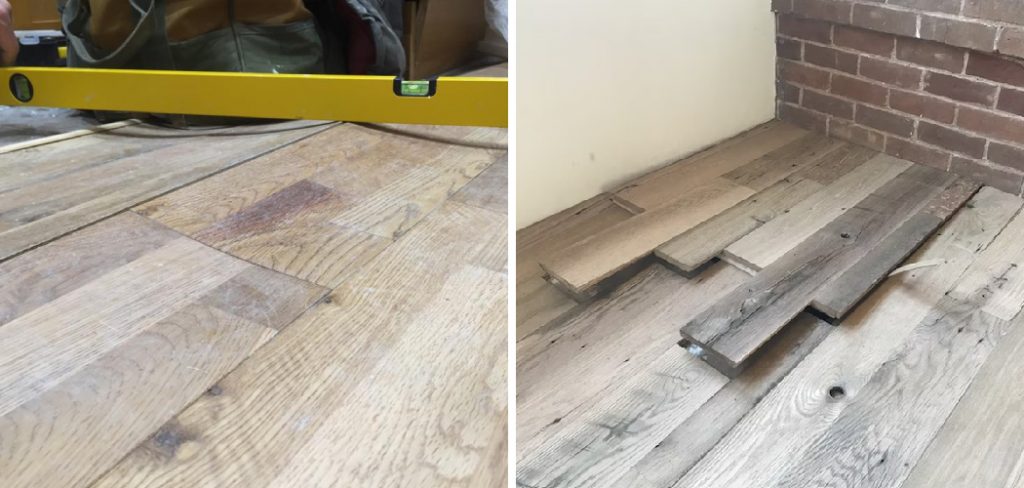
Can You Repair Buckled Hardwood Floors?
There’s nothing quite as frustrating as walking across your beloved hardwood floors and noticing a noticeable buckle or warp in the wood. Whether it’s caused by excessive moisture, a leak, or just the natural shifting of the floor over time, throwing your hands up in defeat can be tempting.
But don’t worry – repairing buckled hardwood floors is possible! Depending on the severity of the damage, you may need to call in a professional. Still, with a little patience and determination, you may be able to fix the issue yourself.
From assessing the damage to finding the right tools and techniques, you can take various steps to get your hardwood floors back in tip-top shape. So don’t give up hope! With a little research and elbow grease, you can get your floors looking as good as new.
Why Should You Repair Buckled Hardwood Floors?
As you walk through your home, your hardwood floors should not squeak or visibly buckle. These issues are not only an eyesore but can also pose a safety hazard. Buckled hardwood floors occur when the wood absorbs moisture and expands, causing the planks to warp and pop up from the subfloor.
It’s crucial to repair them promptly to minimize further damage and restore the beauty and functionality of the flooring. Additionally, repairing buckled hardwood floors can increase the value of your home and prevent potential lawsuits from falls or accidents. Don’t delay repairing your buckled hardwood floors – act now to maintain the safety and appeal of your home.
How to Repair Buckled Hardwood Floors: A Comprehensive Guide
1. Identify the Cause of The Buckling.
The first step in the repair process is identifying the source of the problem. Buckling is caused by excessive moisture and can be attributed to leaks from nearby sources like roofs, pipes, and windows. When the wood absorbs moisture, it expands, causing it to push against itself. This, in turn, causes the floorboards to buckle or lift. Identify the cause and determine whether it’s still ongoing before repairing the damage.
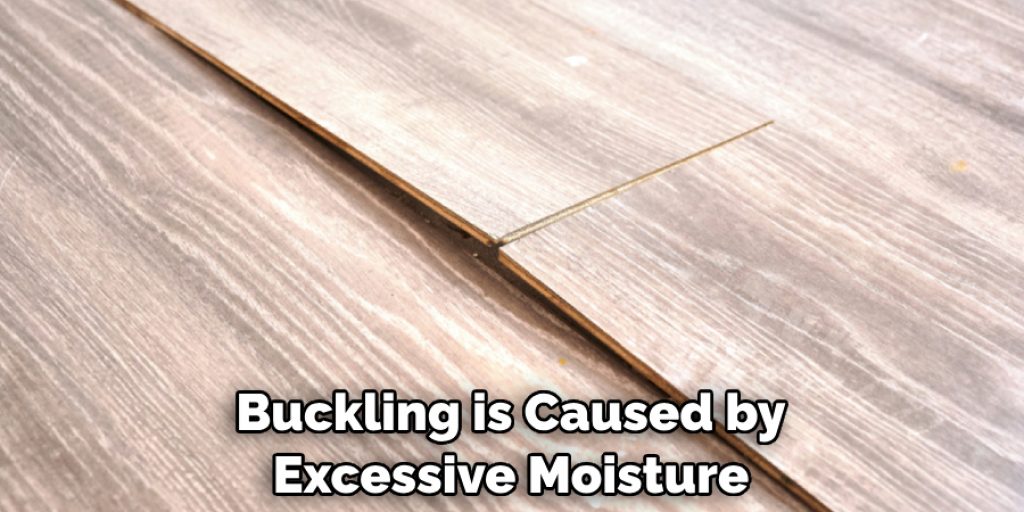
2. Dry out The Affected Area.
Once you’ve identified the source of the problem, it’s important to dry out the affected area. First, remove any unattached boards to prevent them from splitting and causing further damage. Then, rent a dehumidifier and a high-speed fan to extract any existing moisture from the room. Keep the machines running for at least a few days or until the relative humidity stabilizes at around 40–50%.
3. Flatten the Buckled Floorboards.
After drying out the room, the next step is to flatten the buckled floorboards. Carefully flatten the warped planks using a protective eye mask, gloves, and ear protection using a hydraulic jack or weights. Place a piece of wood between the jack or weight and the planks to prevent damage.
Once you’ve flattened the planks and brought them back to their original level, secure them back to their original positions with nails or screws.
4. Replace Damaged Floorboards.
If any damaged floorboards can’t be repaired or have already been repaired multiple times, they should be replaced. To accomplish this, cut out the damaged area using a saw and, using new boards, fit and install the replacement pieces. Afterward, lightly sand and stain the replaced boards to match the rest of the floor.
5. Sand and Refinish the Floor.
The next step is to sand and refinish the entire floor. This is essential, as sanding smooths out any rough spots on the floor, prepping it for refinishing. Apply a sealer of your choice and then a few coats of a high-quality finish to protect the surface. Wait a few days for the floor to dry, and you can walk on it again.
6. Prevent Future Buckling.
To prevent future buckling, keep an eye out for any sources of excessive moisture in your home. Repair any leaks or water damage promptly and regularly check the humidity levels in your home. Use a dehumidifier if necessary, especially in areas prone to humidity, like basements and bathrooms.
7. Know When To Call a Professional.
While many minor buckling repairs can be done by following these tips, there are some cases where it’s best to call a professional. If the damage is extensive or if you’re unsure of how to proceed with the repair, it’s always better to consult an expert. They have the knowledge and experience to handle any issues and ensure that your hardwood floor is repaired properly. Don’t hesitate to seek help if needed.
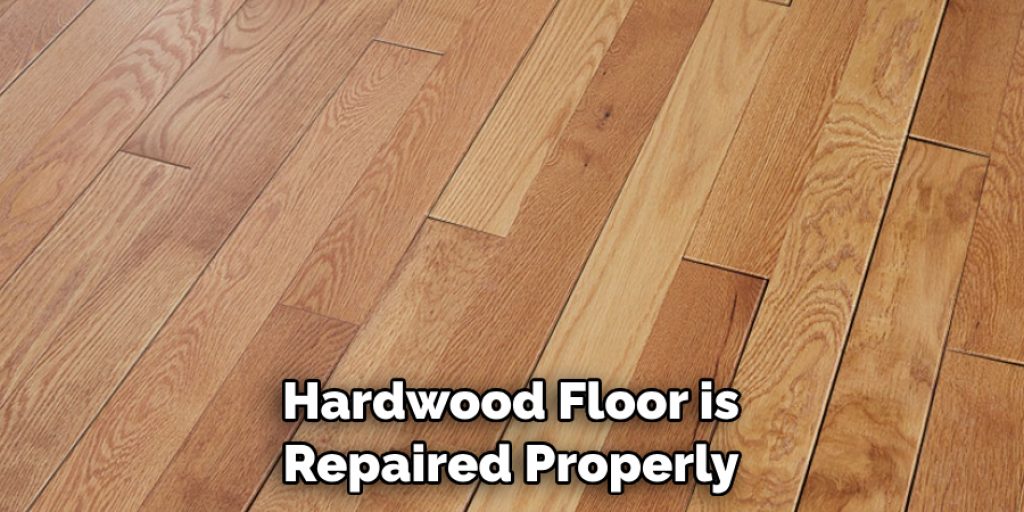
5 Considerations Things When You Need to Repair Buckled Hardwood Floors
1. Inspect the Flooring
The first step in repairing buckled hardwood floors is to inspect the flooring for any signs of damage. Look for signs of water damage, such as warping or discoloration, and check for any loose boards or nails that may need to be replaced. If there is extensive damage, it may be necessary to replace the entire floor.
2. Remove Excess Moisture
Once you have determined that the floor is still structurally sound, it is important to remove any excess moisture from the area. This can be done by using a dehumidifier or a shop vac with a wet/dry setting. It is also important to make sure that all windows and doors are closed so that no additional moisture can enter the room.
3. Repair Subfloor
After removing any excess moisture, it may be necessary to repair the subfloor if it has been damaged by water or other sources. To do this, use plywood sheets to reinforce weak spots and fill in gaps between boards with wood filler. Make sure that all repairs are secure before continuing with the next step.
4. Re-level Floor
To repair buckled hardwood floors, it is important to re-level them using a self-leveling compound or shims placed beneath each board until they are level with one another again. This will help ensure that future buckling does not occur due to unevenness in the flooring surface.
5. Sand and Refinish
Once your hardwood floors have been leveled, you will need to sand them down and refinish them in order to restore their original beauty and luster. Use a fine grit sandpaper and an orbital sander for best results, then apply a coat of polyurethane finish or other sealant recommended by your local hardware store according to manufacturer’s instructions for best results.
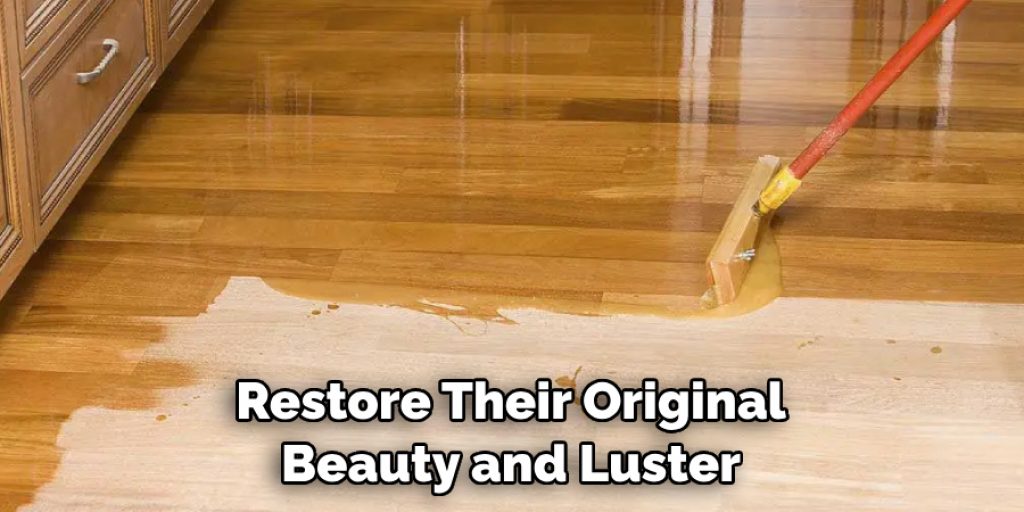
5 Benefits of Repairing Buckled Hardwood Floors
1. Improved Aesthetics
Repairing buckled hardwood floors can significantly improve the aesthetics of your home. Buckled hardwood floors can be unsightly and detract from a room’s overall look and feel. Repairing buckled hardwood floors will restore their original condition, giving your home a more polished and attractive look.
2. Increased Durability
Repairing buckled hardwood floors can also help to increase their durability. Buckling is typically caused by water damage or poor installation, both of which can cause the wood to become weak and brittle over time. By repairing the floor, you strengthen the wood and make it less susceptible to further damage.
3. Improved Safety
Buckled hardwood floors can also pose a safety hazard if left unrepaired. The uneven surface created by buckling can cause people to trip and fall, resulting in injury or even death in some cases. Repairing the floor will level out the surface, reducing the risk of such accidents in your home.
4. Reduced Noise Levels
Repairing buckled hardwood floors can also help reduce noise levels in your home. When wood becomes loose or warped, it creates gaps between planks that allow sound waves to pass through more easily than with tightly fitted boards. By repairing these gaps, you can significantly reduce noise levels throughout your house.
5. Increased Home Value
Finally, repairing buckled hardwood floors can also help increase your home’s value if you decide to sell it in the future. Potential buyers will be drawn to homes with beautiful wooden floors, so having yours repaired could make all the difference when it comes time for negotiations!
Some Common Mistakes People Make When Trying to Repair Buckled Hardwood Floors
Have you ever attempted to repair buckled hardwood floors on your own? While it may seem like a straightforward DIY project, people make common mistakes that can end up causing more harm than good. Some might try to sand down the buckled area without addressing the underlying issue causing the buckling, leading to a temporary fix that will eventually recur.
Others may use excessive water or cleaning products that can further damage the wood. To avoid these mistakes and ensure a successful repair, it’s important to identify the root cause of the buckling and use proper techniques and materials. Remember, when it comes to fixing your hardwood floors, it’s always better to do it right first than to redo it down the line.
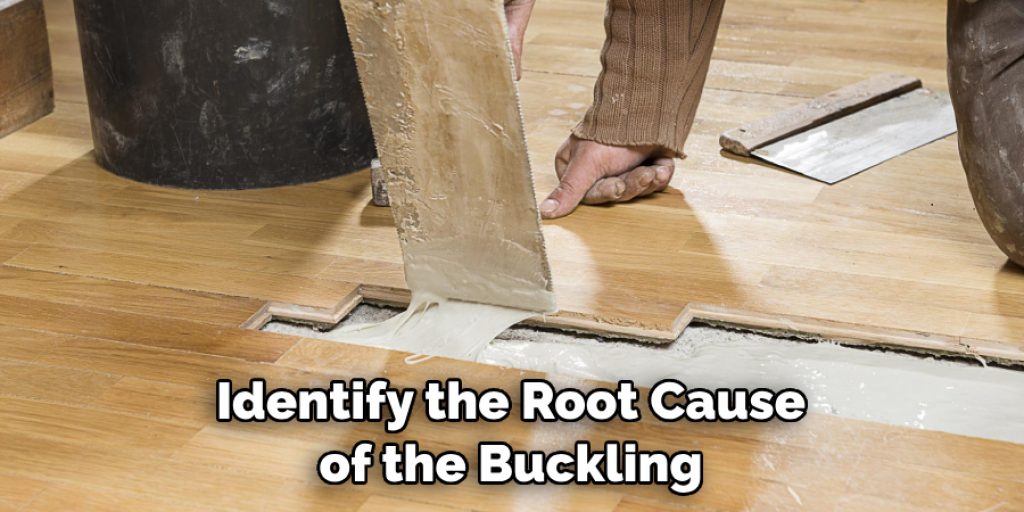
Conclusion
Buckled hardwood floors can be overwhelming, but with this guide, you can return them to their original state. Remember to identify the cause, dry out the affected area, flatten the buckled planks, replace any damaged planks, and finally, sand and refinish the entire floor. With these steps, you can transform your buckled floor into a smooth, polished surface again. Thanks for reading our post about how to repair buckled hardwood floors.

